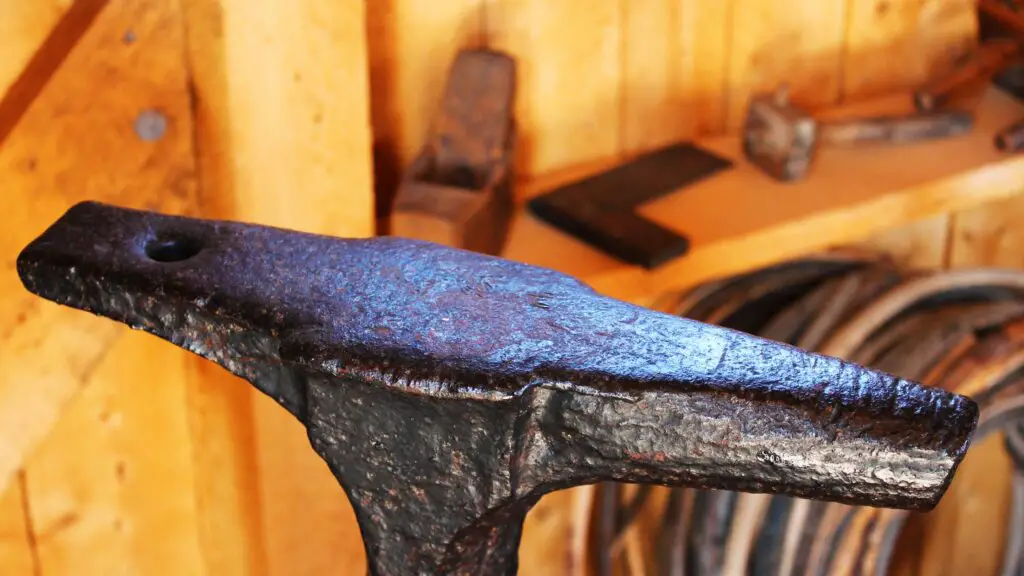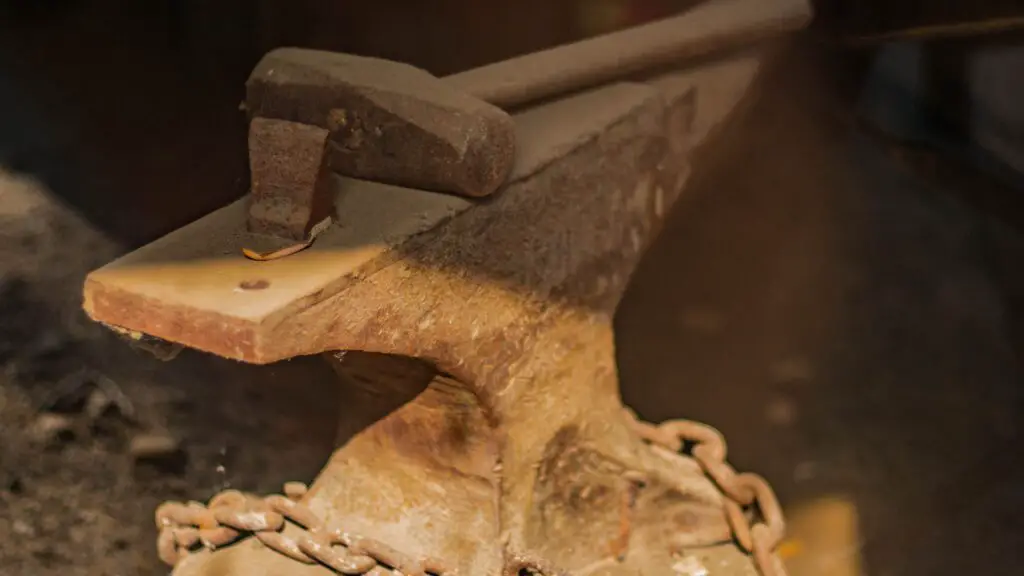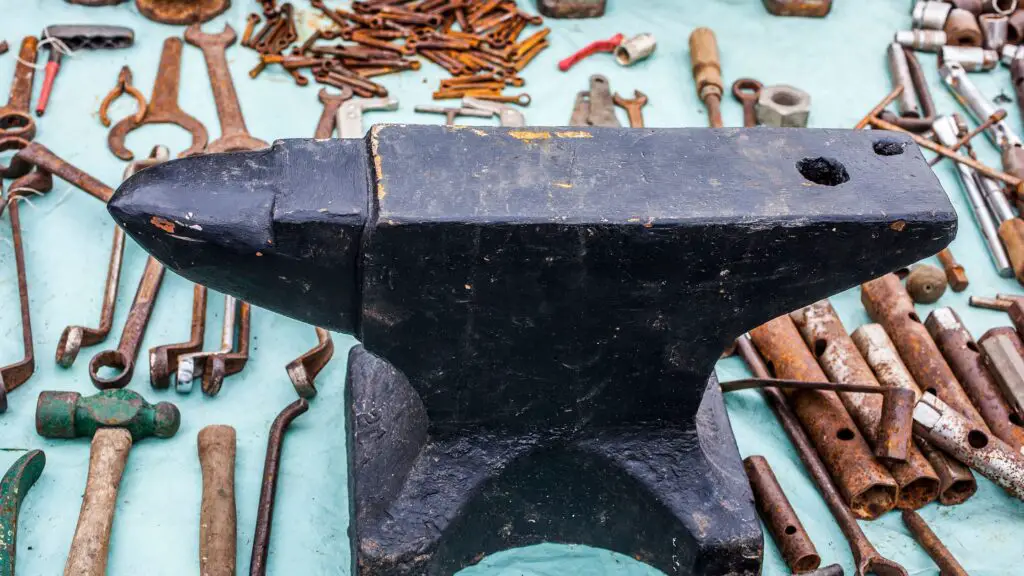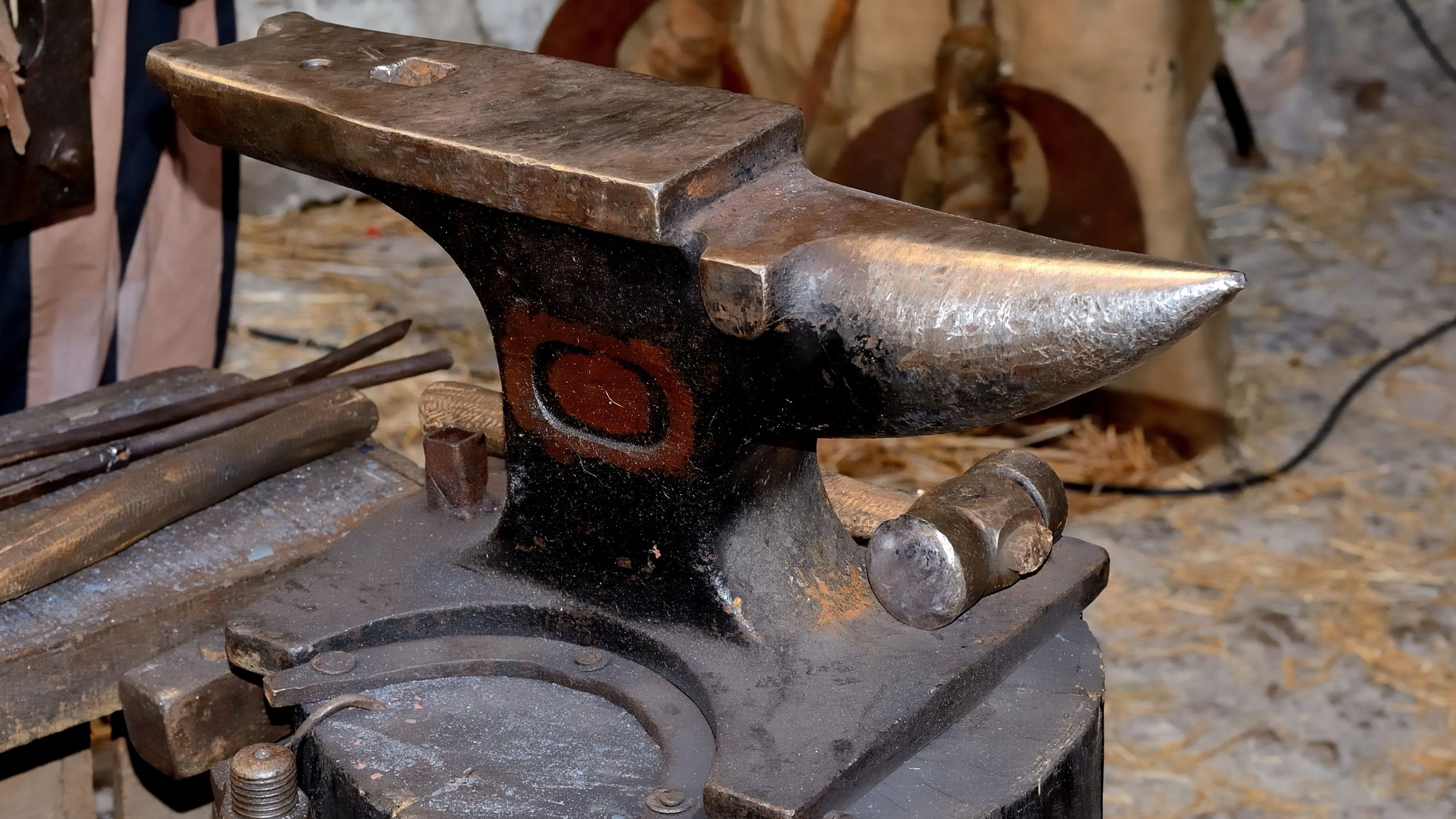Delving into the world of antique anvils unveils a captivating journey through history and craftsmanship. Enthusiasts and collectors worldwide are drawn to the allure of these timeless tools, resonating with the legacy they carry from bygone eras. However, amidst the allure lies a challenge: accurately identifying these antiquities. The quest for precise antique anvil identification is paramount, allowing enthusiasts to unlock the secrets held within these metal masterpieces. In this comprehensive guide, we will delve into the importance of discerning these anvils’ true origins, delve into their historical significance, and equip you with exclusive insider tips and techniques, empowering you to become an adept connoisseur in Mastering Antique Anvil Identification: Insider Tips Revealed!
History of Antique Anvils

Origins and Evolution Across Eras
Antique anvils stand as enduring witnesses to the evolution of metalworking and craftsmanship across centuries. Tracing their origins back to ancient times, these indispensable tools have evolved in design and functionality. From the primitive stone anvils used by early blacksmiths to the refined iron and steel anvils of the Middle Ages and beyond, each era introduced distinct changes reflective of technological advancements and cultural influences. For instance, the transition from wrought iron anvils to steel ones marked a pivotal shift in durability and precision, impacting the identification process based on materials and construction methods employed in different periods.
Notable Styles and Regional Designs
Anvils exhibit a rich diversity in styles and designs, often influenced by geographic regions and local blacksmithing traditions. European anvils, with their horned ends and varying shapes across countries like England, Germany, and France, showcase unique characteristics that aid in pinpointing their origin. Similarly, American anvils from different states or regions display regional peculiarities in their shapes, sizes, and even surface treatments, offering valuable cues for identification. Sharing experiences of encountering distinctive styles or rare finds from specific regions can illuminate the diversity and nuances present in antique anvil identification.
Significance of Markings, Stamps, and Craftsmanship
Markings and stamps on anvils serve as crucial identifiers, often bearing the signature of their makers or manufacturing details. These imprints, whether in the form of maker’s marks, logos, serial numbers, or even decorative embellishments, provide invaluable clues to trace an anvil’s lineage. Moreover, the craftsmanship exhibited in the forging, shaping, and surface finish of an anvil speaks volumes about its authenticity and historical relevance. Sharing personal experiences of discovering and deciphering unique markings or appreciating fine craftsmanship can elucidate the significance of these details in the process of antique anvil identification.
Key Features and Characteristics

Detailed Examination of Anvil Components
To master antique anvil identification, a meticulous understanding of its components is paramount. Anvils consist of various parts, each holding significance in determining its origin and era. Exploring components such as the face, horn, heel, waist, and base offers valuable insights into the anvil’s functionality and historical context. For instance, the shape and condition of the face, the presence of handling holes, or the style of the horn and heel can all serve as distinctive markers for identification.
Identification of Period-Specific and Maker-Unique Features
Anvils, like fingerprints, often possess unique traits attributable to specific periods or makers. By studying these distinct features, enthusiasts can unravel the secrets behind an anvil’s lineage. Specific indentations, peculiarities in the pritchel or hardy hole shapes, or the presence of auxiliary features like upsetting blocks or clip horns might indicate a certain era or a particular manufacturer. Delving into the minutiae of these features and sharing anecdotes of identifying rare or lesser-known characteristics can be enlightening for those passionate about antique anvil identification.
Emphasis on Materials, Sizes, and Shapes Reflecting Eras
Materials used in crafting anvils, whether wrought iron, cast iron, or steel, hold immense significance in dating and identifying these artifacts. Variations in sizes and shapes across different periods or regions further aid in narrowing down anvil origins. For instance, smaller anvils might indicate specialized use or earlier manufacturing, whereas larger, more massive anvils might align with specific industrial advancements or a particular era’s prevalent forging practices. Highlighting these correlations between materials, sizes, and shapes as indicators of certain periods enhances the proficiency of enthusiasts in Mastering Antique Anvil Identification: Insider Tips Revealed!
Understanding these key features and characteristics not only fosters a deeper appreciation for the craftsmanship but also equips enthusiasts with the tools necessary to navigate the intricate world of antique anvil identification, enabling them to distinguish between various eras, makers, and regional influences with greater precision.
Recognizing Anvil Makers and Origins

Overview of Renowned Anvil Manufacturers and Trademarks
Anvils crafted by renowned manufacturers often bear distinctive trademarks or maker’s marks, acting as vital clues in the pursuit of antique anvil identification. Exploring the legacy of eminent manufacturers such as Peter Wright, Mousehole Forge, or Hay-Budden unveils a treasure trove of information embedded in their trademarks or logos. These marks often underwent changes over time, allowing enthusiasts to pinpoint the era of production and even discern the authenticity of an anvil attributed to a specific maker. Sharing experiences of identifying and tracing the history behind these marks adds depth to the understanding of anvil origins.
Impact of Regional Variations on Identifying Origin
Regional variations in anvil designs, materials, and manufacturing techniques significantly influence identification. Anvils originating from distinct geographic regions exhibit characteristics unique to their locales, enabling enthusiasts to differentiate between them. Whether it’s the robust English anvils with their distinctive shaping or the American anvils boasting regional variations from Pennsylvania or Ohio, recognizing these subtleties aids in narrowing down an anvil’s origin. Sharing experiences of encountering and distinguishing these regional variations enriches the learning process for those passionate about antique anvil identification.
Deciphering Maker’s Marks, Logos, and Serial Numbers
Deciphering the intricate details of maker’s marks, logos, or serial numbers requires a keen eye and a comprehensive understanding of historical context. Analyzing the placement, style, and evolution of these imprints over different manufacturing periods often holds the key to unlocking an anvil’s origins. Techniques for cleaning, preserving, and identifying faint or obscured markings can be invaluable in unraveling an anvil’s history. Sharing personal tips and experiences in successfully decoding elusive marks or serial numbers fosters a collaborative learning environment among enthusiasts dedicated to mastering the art of antique anvil identification.
By delving into the realm of renowned manufacturers, regional variations, and decoding maker’s marks or serial numbers, enthusiasts gain a deeper understanding of the intricate web of information embedded within antique anvils. This comprehensive knowledge enhances their capability to discern origins, makers, and historical significance, elevating their expertise in Mastering Antique Anvil Identification: Insider Tips Revealed!
Practical Identification Techniques

Step-by-Step Guide to Inspecting and Assessing an Anvil
Mastering antique anvil identification requires a systematic approach to examining these historical artifacts. A step-by-step guide encompassing the thorough inspection of an anvil’s components, surface condition, and identifying features serves as a foundational tool for enthusiasts. Exploring methods such as checking for wear patterns, scrutinizing edges and corners for signs of use, and evaluating any modifications or repairs provides valuable insights into an anvil’s history and potential origins. Sharing personal experiences of employing these techniques to uncover hidden details or confirm attributions enriches the learning process for budding enthusiasts.
Effective Utilization of Reference Materials and Online Resources
In the digital age, a wealth of reference materials and online resources serve as indispensable companions in the journey of antique anvil identification. Leveraging these resources effectively, including books, catalogs, forums, and databases, empowers enthusiasts with a vast repository of knowledge and collective experiences. Understanding how to navigate and discern credible information from these sources aids in corroborating findings and expanding one’s understanding of anvil identification. Sharing favorite go-to references or online platforms and recounting instances where these resources proved invaluable adds practical value to the learning experience.
Real-Life Examples and Case Studies for Hands-On Understanding
Real-life examples and case studies offer practical application of theoretical knowledge in Mastering Antique Anvil Identification: Insider Tips Revealed! Narrating experiences of encountering diverse anvils, conducting detailed assessments, and successfully identifying their origins provides invaluable insights. Case studies that outline the thought process behind identification, the challenges faced, and the eventual resolution contribute to a deeper understanding of the nuances involved. Sharing personal case studies fosters a sense of camaraderie among enthusiasts, inspiring collaborative learning and skill enhancement in the realm of antique anvil identification.
By outlining practical inspection techniques, advocating effective utilization of reference materials, and presenting real-life examples and case studies, this section aims to equip enthusiasts with hands-on tools and experiences crucial for honing their skills in antique anvil identification.
Common Mistakes to Avoid

Pitfalls and Misconceptions in Antique Anvil Identification
In the pursuit of mastering antique anvil identification, enthusiasts often encounter common pitfalls and misconceptions that can lead to inaccurate assessments. Misattributions based solely on surface-level characteristics or anecdotal information, overlooking subtle details, or relying solely on hearsay are prevalent mistakes. Sharing experiences of encountering and rectifying such misconceptions can serve as cautionary tales, emphasizing the importance of a comprehensive approach to identification.
Guidance on Avoiding Misinterpretations and Inaccurate Attributions
Avoiding misinterpretations and inaccurate attributions requires a discerning eye and meticulous research. Often, enthusiasts may jump to conclusions based on superficial similarities without delving deeper into historical context or verifying information. Guidance on scrutinizing multiple aspects, cross-referencing with reliable sources, and seeking expert opinions can aid in steering clear of misattributions. Sharing personal instances of revising initial attributions or debunking misconceptions through thorough investigation reinforces the importance of diligence in the identification process.
Tips for Conducting Thorough Research and Cross-Verification
Conducting comprehensive research and cross-verification stands as a linchpin in accurate antique anvil identification. Providing tips on exploring diverse resources, consulting multiple references, and employing a critical approach to information validation strengthens one’s ability to authenticate an anvil’s origin or maker. Sharing experiences of successful cross-verification or instances where meticulous research overturned initial assumptions underscores the significance of a rigorous approach in ensuring accurate attributions.
By highlighting common pitfalls, offering guidance to avoid misinterpretations, and emphasizing the importance of thorough research and cross-verification, enthusiasts gain valuable insights into refining their skills in Mastering Antique Anvil Identification: Insider Tips Revealed! Learning from mistakes and experiences shared within the community aids in fostering a more accurate and informed approach to antique anvil identification.
Expert Insights and Tips
Interviews or Quotes from Seasoned Collectors or Experts
Gaining insights from seasoned collectors or experts in the field of antique anvil identification offers invaluable wisdom and expertise. Conducting interviews or featuring quotes from individuals with extensive experience enriches the understanding of identifying unique or rare anvils. Their anecdotes, advice, and firsthand encounters with elusive or lesser-known anvils provide an unmatched learning opportunity. Sharing excerpts from these interviews or expert insights illuminates the nuances and intricacies involved in mastering the art of identifying antique anvils.
Insider Tips for Identifying Rare or Lesser-Known Anvils
Seasoned collectors often possess a treasure trove of insider tips and techniques for identifying rare or less documented anvils. These insights may include unconventional markers, subtle characteristics, or overlooked details that hold significance in pinpointing the origins or makers of obscure anvils. Sharing these insider tips fosters a sense of community learning, allowing enthusiasts to expand their knowledge base and refine their identification skills. Real-life examples or anecdotes where these insider tips led to uncovering hidden details can be particularly enlightening.
Advice on Preserving and Maintaining Antique Anvils
Preserving and maintaining antique anvils is crucial in retaining their historical value and integrity. Expert advice on proper care techniques, storage recommendations, and methods to prevent corrosion or deterioration is invaluable. Insights into restoring or refurbishing antique anvils while preserving their authenticity and historical character also hold significance. Sharing experiences or anecdotes regarding successful preservation methods or restoration projects provides practical guidance for enthusiasts invested in maintaining these historical artifacts.
By incorporating interviews or quotes from experts, sharing insider tips for identifying rare anvils, and providing advice on preserving and maintaining antique anvils, this section aims to offer a comprehensive understanding of Mastering Antique Anvil Identification: Insider Tips Revealed! Learning from the wisdom and experiences of seasoned collectors or experts elevates enthusiasts’ expertise in accurately identifying and preserving these remarkable pieces of history.
Conclusion
In unraveling the intriguing world of [antique anvil identification], we’ve delved into a journey rich with history, craftsmanship, and meticulous examination. Key takeaways encompass understanding the evolution of anvils through eras, recognizing distinctive features, and deciphering maker’s marks crucial for accurate identification. We’ve explored pitfalls to avoid, practical techniques, and the significance of expert insights in honing our skills.
To all enthusiasts passionate about historical artifacts, I encourage you to immerse yourselves further into the captivating realm of antique anvils. Embrace the challenge of mastering identification techniques, appreciate the craftsmanship embedded in these timeless tools, and discover the stories concealed within each anvil’s history.
As we conclude this insightful journey, remember that our collective exploration of antique anvils thrives on shared experiences and a community of enthusiasts dedicated to preserving history. I invite you to continue this quest for knowledge and discovery. Share your experiences, engage with fellow enthusiasts, and expand your understanding by exploring related artifacts, such as the intriguing world of antique crosscut saw identification available on NexAntique’s website.
Let’s continue uncovering the mysteries of history, preserving the legacy of craftsmanship, and fostering a vibrant community passionate about preserving our heritage. Join us in this ongoing exploration, where every discovery enriches our understanding of the past and inspires future generations of collectors and historians.

Leave a Reply